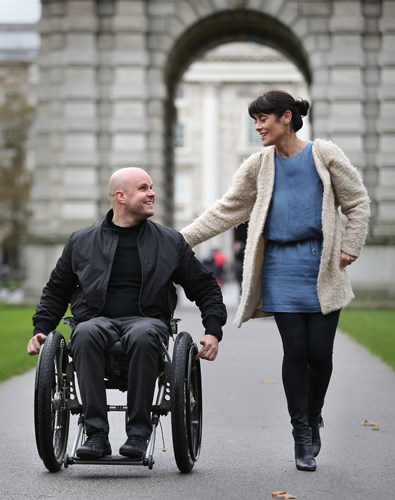Over the last number of years, I’ve come to understand that spinal cord injury strikes at the very heart of what it means to be human. It turns us from upright, running, jumping forms into seated compromises of what we once were. We’re not designed to sit down for the rest of our lives but that is the only option for up to 500,000 people per year after spinal cord injury. It’s not just the lack of feeling and movement. Paralysis also causes spasms, nerve pain, cardiovascular issues, infections, kidney problems, all these things which stack up to exhaust even the most determined.
Worse, up to this point in history it has proven to be impossible to find a cure for paralysis. Yet history is filled with accounts of the impossible made possible through human endeavor, the kind of human endeavor that took people to the South Pole at the start of the last century. And, the kind of human endeavor that will take people to Mars this century.
Inspired by those stories of exploration, I figured there must be people out there exploring the fringes, seeking to cure paralysis. We didn’t find any in Ireland. We had to look further afield. We had to go to America, England, Switzerland and elsewhere.
Specifically we found San Francisco-based engineers at Ekso Bionics who had created a robotic exoskeleton. Initially it allowed me to walk in their workshop back in 2012 and I’ve done over one and a half million steps since. But the robot was doing all the work for me. We needed something more. Fortunately, in 2013, we started working with a visionary scientist at UCLA—Dr. Reggie Edgerton and his team—who had just had a scientific breakthrough using electrical stimulation of the spinal cord allowing for voluntary movement of paralysed limbs.
We discovered that the engineers at Ekso Bionics and the UCLA scientists knew about each other, of course, but as so often happens when people are busy doing groundbreaking work, they hadn’t yet got together. That seemed to be our job, a way we could contribute to the cause.
We created our first collaboration combining those two technologies in 2014. For three months we moved into the UCLA lab. Every morning Reggie’s team attached electrodes to my lower back, which pushed electricity into my spinal cord and excited my nervous system as I walked in the Ekso.
For the first time since I had been paralyzed, I could feel my legs beneath me.
Not the way I used to, but with the stimulator turned on, upright in my robot, they felt substantial; I could feel the meat of my muscles around the bones of my legs. As I walked, the electrical stimulation enabled me to voluntarily move my legs. As I did more, the robot intelligently did less. My heart rate rose to a running level of 140 to 160 beats per minute. My calf muscles, which had wasted to almost nothing, began to come back.
My fiancée, Simone, describes it like the moment when Iron Man plugs the mini arc reactor into his chest and he, and his suit, suddenly become something else altogether.
It was a start, but we’re not finished yet. Since then we have been systematically forging connections worldwide to break through silos across disciplines and institutions to accelerate progress towards the cure. In particular, alongside my team, I have developed research projects valued at over $5 million involving rehabilitation; robotics; neuro-modulation; neuro-technology; virtual reality; and pharmacology. In addition, I co-created the Druid Collective, an initiative within the World Economic Forum to connect science and technology spin-out companies with relevant expertise and capital. So far, we have facilitated the formation of a $5 million venture philanthropy fund with a Silicon Valley VC and US philanthropic foundation to help early-stage funding of NeuroRecovery Technologies, a start-up focused on commercializing the spinal stimulators.
It’s funny but I’ve started to consider myself more aligned with the Polar explorers than I ever did while racing to the South Pole. We have been working with incredible pioneers all around the world, who had unfortunately been working in isolation. I say unfortunately because we know that no individual, no single academic institution, is going to crack this particular problem on their own—but together we believe that they will. Despite the hero narrative being so compelling, it’s rarely true. The hero is too often a soloist. That isn’t how things progress. For the real breakthroughs we need people who are prepared to collaborate. So, I’m on a new expedition, this time to cure paralysis in our lifetime. To do it we are actively exploring the intersection where humans and technology collide and we are catalysing newfound collaborations.

